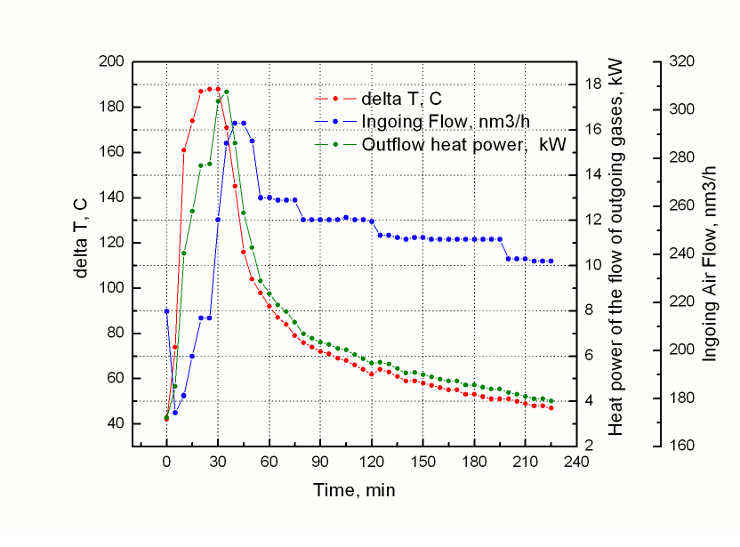Determination of heat losses and efficiency of the heater, using anemometer and thermocouple
SashBatsHomeLabs and stovemaster Batsutin
Present
Determination of heat losses and efficiency of the heater, using anemometer and thermocouple
Methodology

Moscow 2009
The simple method of efficiency determination of household heaters is offered and the minimal set of the equipment, allowing it to make, is described. Errors of measurements are estimated. Speed of heat "blowing-out" from the heater after fire is finished is determined with completely open damper and ashbox’s door. The basic formulas used at the analysis of an overall performance of heaters are deduced, the accent on physical sense of expressions and factors is made. The incorrectness of time-averaging of the data received by a gas analyzer, for calculation of efficiency of household heaters of periodic action is shown. For a wide range of interested readers.
THE CONTENTS
1. A theoretical part
1.1 Humidity of wood
1.2 Specific calorific value of wood
1.3 Specific volume of air and exhaust gases
1.4 A heat capacity of air and exhaust gases
1.5 Efficiency of the heater
1.5.1 The analysis of expressions for efficiency
1.5.2 Comparison with Siegert’s formula for gas analyzers, the European standard SN 15250
2. An experimental part
2.1 A heater
2.2 The thermometer
2.3 The anemometer
2.4 The balance
2.5 Carrying out of experiment
3. Processing experimental data
3.1 Correction of the data of speed of entering air
3.2 Calculation of the flow of entering air and its reduction to NTP
3.3 Allocation of the period of burning of fuel and the period of cooling of the furnace
3.4 Calculation of air excess value αavg average and finding of the dependence α from time
3.5 Calculation of heat losses during burning and the overall heater’s efficiency
3.6 Measurement errors estimation
3.7 Calculation of heat losses through open damper and firebox’s door after fire finished
4. Conclusions
5. References
6. Appendix
6.1 Deduction of formulas for calculation of specific volumes of air and exhaust gases
6.2 Deduction of formulas for calculation of efficiency of the heater
6.3 Translation factors of the basic physical values
7. Some facts, found out after this article was written
7.1 Net calorific value of wood by European standard EN 15250
7.2 The maximum concentration of CO2 in exhaust gases and accuracy of air excess determination
7.3 Amendment to NCV - Moisture content formula deduction
See Full Document in PDF format (1.3MB)
